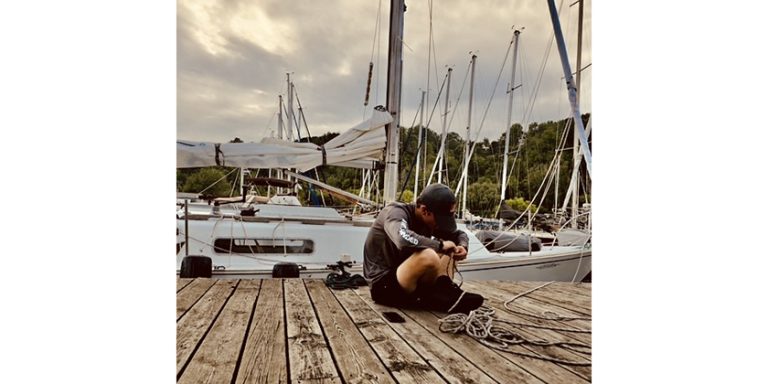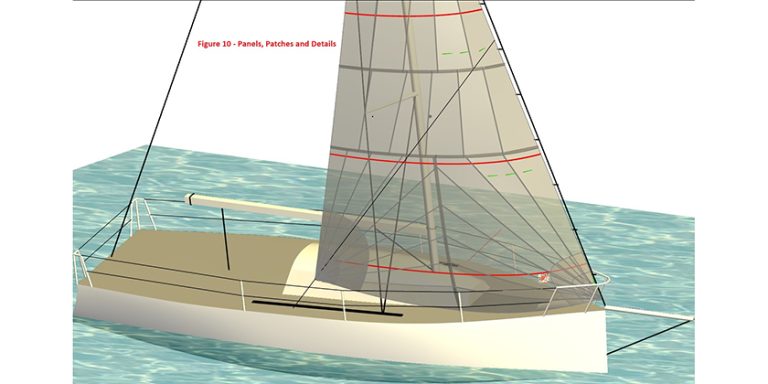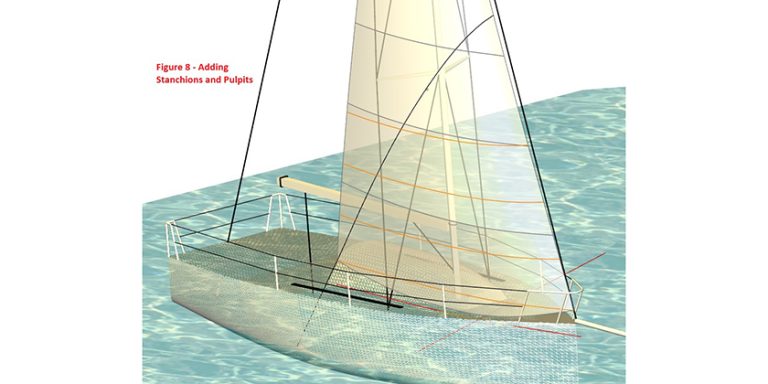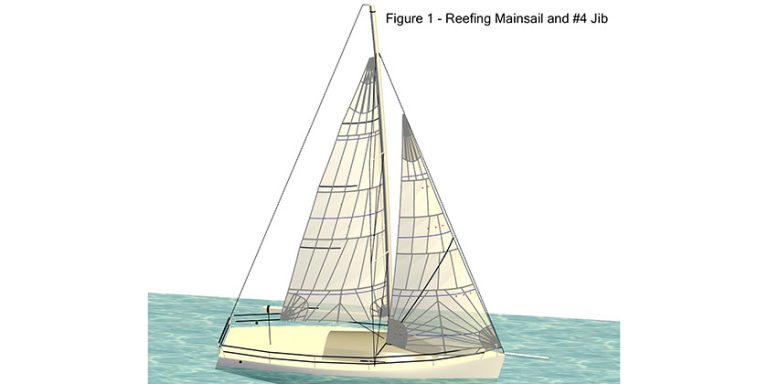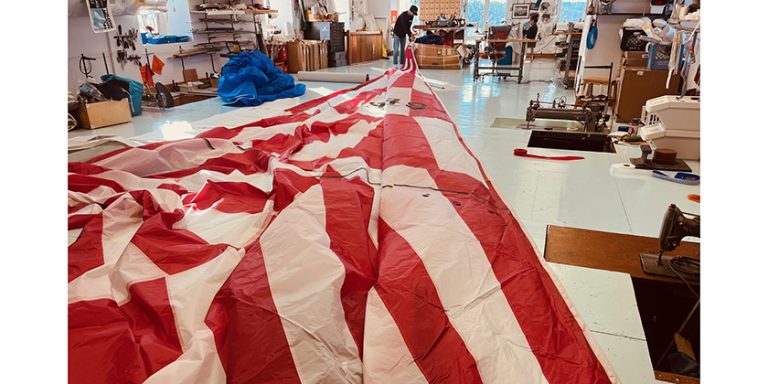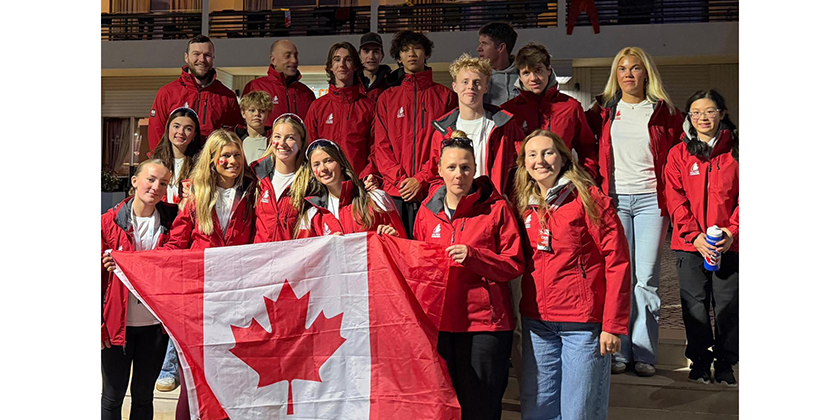Keven Talks Sails: Whisker Pole Basics
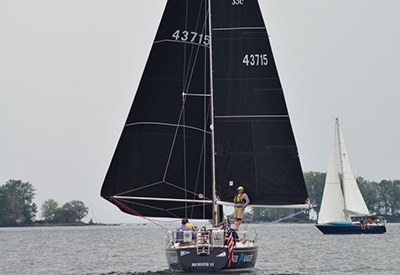
August 2, 2023
 Figure 1 – Wing on wing for the win
Figure 1 – Wing on wing for the win
Club Racing has evolved over the years, from primarily racer/cruisers flying spinnakers, to a fairly serious level of non-spinnaker racers. A quick look at race registrations around the Great Lakes shows most clubs having more NFS (Non-Flying Sails = no spinnakers) racers than Flying Sails racers. I find this interesting, and almost inevitable with the average sized sailboat getting larger and more people interested in sailing with less crew.
Back when I was growing up club racing, you were only allowed your spinnaker pole limited to your rated J length as a whisker pole. With overlapping headsails, this was at best an awkward way to pole out the clew of a headsail since the pole was considerably shorter than the foot length of the sail. This leads to floppy and somewhat uncontrolled wing on wing sailing (main on one side, genoa on the other). Most handicapping systems allow whisker poles that can extend to the foot length of the headsail or even longer. This makes wing on wing sailing downwind a much more enjoyable endeavor.
Setting up a Whisker Pole
To use a whisker pole, you first need the pole. There are a few sources for a telescopic whisker pole. Most spar makers like Seldenmast.com make whisker poles, as does Forespar.com, and Whiskerpole.net which is located near Toronto. These makers have well established guidelines for selecting the correct pole for your boat.
Figures 2 and 3 – Whisker Pole from Whiskerpole.net
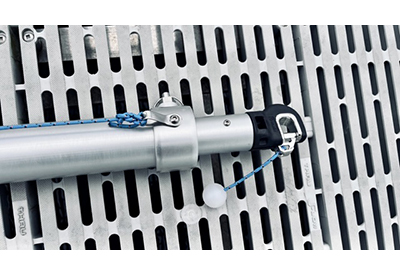
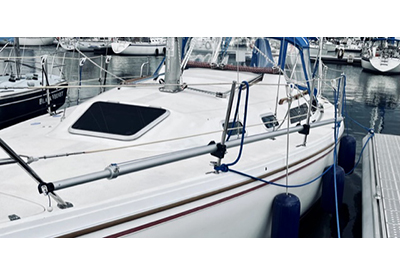
Most of the time, you don’t need anything extra except for a spinnaker pole ring on the front of the mast. Most boats already have one on a track, or it is at least easy to add a fixed ring on the front of the mast around the level of the gooseneck. With boats larger than 33’ or so, a topping lift that attaches to the outboard pole end is a good idea to support the larger and heavier poles required. For extended cruises offshore and in windier conditions, a downhaul to the outboard end can help provide more stability. I will sometimes rig a snatch block to an amidships location similar to a spinnaker guy. This helps hold the pole down and keep the pole near the clew of the headsail.
 Figure 4 – Whisker Pole Rigging
Figure 4 – Whisker Pole Rigging
Attaching the sail
On some racing boats like Stars, the whisker pole is a spike that goes into the clew ring. This is found on small boats, but most keelboats will have a latching end that you clip over the working (loaded) jib sheet. This allows easy attachment with the sail blanketed behind the main or the headsail furled up most of the way. I prefer rolling up the sail to gybe, since attaching the pole clip to a flapping sail can be hard work!
So does a whisker pole replace a spinnaker? Not really; a spinnaker will almost always be quicker when making a downwind passage. What a whisker pole will do is make downwind sailing easier, quicker and more stable than sailing without one. As an old timer once told me, “Brave sailors put up spinnakers, and the wind gods take them down.”
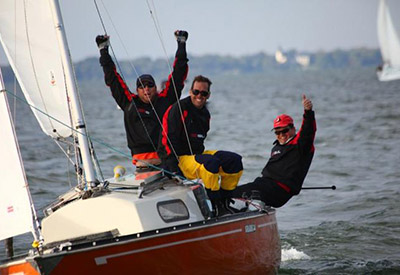 Keven Piper, two-time Shark 24 World Champion, founded Hamilton, ON-based Bay Sails in 1998. Email: baysails@gmail.com
Keven Piper, two-time Shark 24 World Champion, founded Hamilton, ON-based Bay Sails in 1998. Email: baysails@gmail.com

